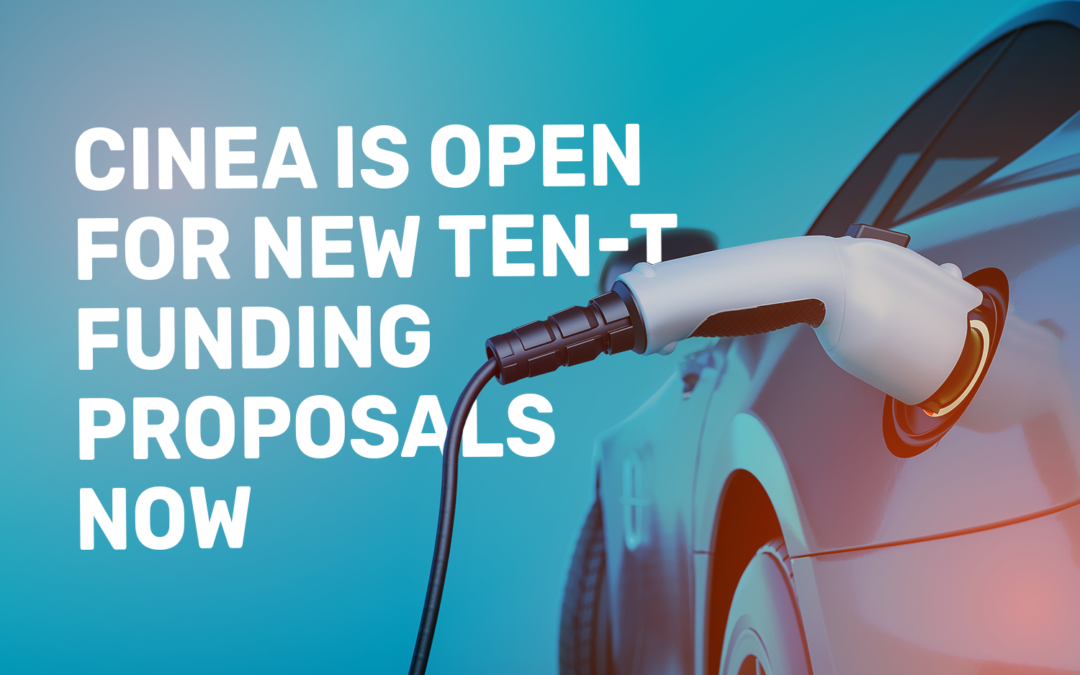CINEA is open for new TEN-T Funding proposals now
The European Climate Infrastructure and Environment Executive Agency (CINEA) has opened its webgate for the application of new proposals with a deadline of June, 7th, 2022 to the following sub-programmes of TEN-T:
- Alternative Fuel Infrastructure Facility – Unit Contributions (Cohesion Envelope)
- Alternative Fuel Infrastructure Facility – Unit Contributions (General Envelope)
- Alternative Fuel Infrastructure Facility – Works – LNG (Cohesion Envelope)
- Alternative Fuel Infrastructure Facility – Works – LNG (General Envelope)
- Alternative Fuel Infrastructure Facility – Works – Zero Emissions (Cohesion Envelope)
- Alternative Fuel Infrastructure Facility – Works – Zero Emissions (General Envelope)
In the field of alternative fuels, the 2021 CEF Transport Call focuses on funding support for LNG bunkering for TEN-T maritime and inland ports, funding based on unit contributions for electricity fast-charging infrastructure as well funding focused on zero emissions for the roll-out of hydrogen refuelling and electricity recharging infrastructure.
These topics aim at supporting the deployment of alternative fuel supply infrastructure, contributing to decarbonising transport along the TEN-T Network.
The available budget of the Alternative Fuels Infrastructure Facility is EUR 1 200 000 000. Funding for alternative fuels infrastructure development depends on the respective type of Action (Project) as well as its location according to the General envelope or the Cohesion envelope.
LNG
The objective of this topic is to support the deployment of alternative fuel supply infrastructure for waterborne transport by supporting low-emission solutions in the transition phase towards decarbonising maritime and inland waterway transport along the TEN-T Network.
Actions (Projects) will be funded that are supporting LNG bunkering for TEN-T maritime and inland ports as a transitional solution, including:
◉ Supplying infrastructure for TEN-T maritime and inland vessels on TEN-T inland waterway and maritime ports.
◉ Storage facilities specifically for the transport sector.
◉ Bunkering vessels.
Furthermore, there is a priority to Actions (Projects) that include the immediate or progressive uptake of bio-LNG.
LNG refuelling infrastructure is funded in the form of fixed co-funding rates.
Unit Contributions
Actions (Projects) supporting the roll-out of publicly accessible electricity fast-charging, including electricity grid connexion, will be funded under this topic.
On the TEN-T road network, funding for recharging stations are dedicated to the following subject matters:
◉ light-duty vehicles with a minimum power output of 150 kW;
◉ heavy-duty vehicles with a minimum power output of 350 kW;
◉ grid connection with a minimum power capacity of 600kVA.
The recharging infrastructure must be located on the relevant TEN-T road sections identified in the “eligibility map”. A buffer of 2km driving distance from the TEN-T road network is applicable, calculated from the closest exit.
On safe and secure parkings along the TEN-T road network, publicly accessible recharging stations dedicated to heavy-duty vehicles with a minimum power output of 150 kW as well as grid connections with a minimum power capacity of 600kVA will be funded.
In urban nodes (listed in Annex II.2 of the TEN-T Regulation) publicly accessible recharging stations for heavy-duty vehicles with recharging points with a minimum power output of 350 kW as well as grid connections with a minimum power capacity of 600kVA will be funded.

Zero Emissions
The objective of this topic is to support the deployment of alternative fuel supply infrastructure, contributing to decarbonising transport along the TEN-T Network by means of electricity recharging and hydrogen refuelling infrastructure.
The following Actions will be supported:
◉ Actions supporting the roll-out of hydrogen refuelling infrastructure on the TEN-T road network, with priority to long haul heavy-duty transport.
◉ Actions supporting the roll-out of hydrogen refuelling infrastructure on sections of the TEN-T rail network for which a derogation from the electrification requirement has been granted in (TEN-T Regulation Article 12(3) or 39(3)), on sections of isolated networks (TEN-T Regulation Article 3(u)) or in terminals for refuelling shunting locomotives.
◉ Actions supporting the roll-out of hydrogen refuelling and electricity recharging infrastructure dedicated to public transport and heavy-duty vehicles in urban nodes, e.g:
- recharging infrastructure in bus depots
- publicly accessible recharging infrastructure for heavy-duty vehicles
- opportunity-based charging devices and related energy storage facility systems
-
◉ Actions supporting the deployment of alternative fuels for TEN-T maritime ports, inland waterways and inland ports, and airports, e.g., hydrogen, electrification of airport ground operations, supply infrastructure and storage of liquid alternative fuels etc. (according to Directive 2014/94/EU26).
Electricity recharging and hydrogen refuelling infrastructure is funded in the form of fixed co-funding rates.
For further details, please feel free to contact the EUFUNDINGHUB.
EU funding news and articles. All new articles in one place!
Do you want to read all the articles ahead ? Subscribe now and receive our online magazine each month!


Recent Comments